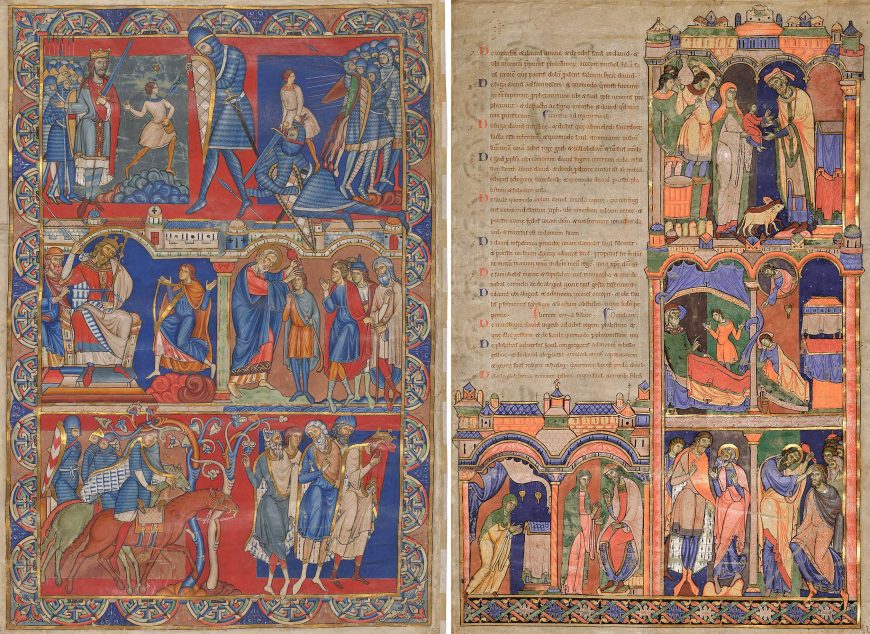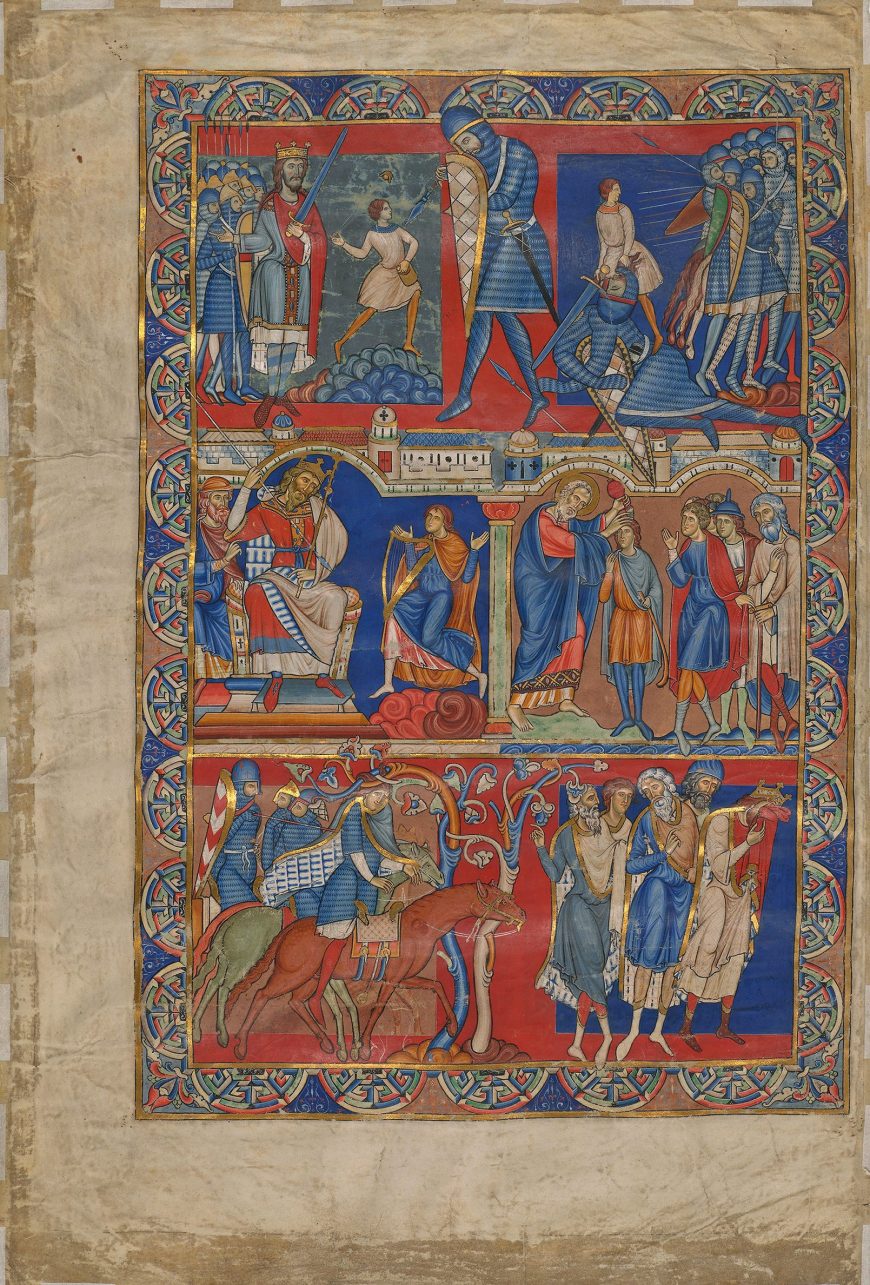The Morgan Leaf from The Winchester Bible
The Winchester Bible ( https://smarthistory.org/winchester-bible/)was made at the Cathedral priory of St. Swithun around the twelfth century in Winchester, England and is currently still in Winchester. The Morgan Leaf was originally inserted as a frontispiece to the Book of Samuel in the Winchester Bible. A frontispiece is an illustration on the opposite side of the title page. The Morgan Leaf gets its name from the museum it is currently located in which is the Morgan Library & Museum in New York, the two pieces are currently no longer together. The Winchester Bible is known as a giant bible, it contains the entire text of the Christian Bible from the Book of Genesis to Revelation. During the Romanesque period giant bibles were deemed vital by Pope Gregory VII, he required that every monk have access to the most accurate version of the bible. Before the eleventh century complete versions of bibles were somewhat rare. The Winchester Bible is written on parchment made from calf skin, about 250 calves were needed to complete the bible, thus making the production of this bible incredibly expensive. The text in this bible was hand-written by one monk in roundhand calligraphy and it is estimated to have taken about four years. The illustration in the Winchester Bible which includes the Morgan Leaf was even more complicated than the text. It is believed that 6 artists were commissioned for this project that worked in two consecutive teams, and yet many of the illustrations were left unfinished. The Morgan Leaf along with two other books for this bible was added as an afterthought. The illustrations on the Morgan Leaf depict the tale of David and Goliath within its three registers. In the first register David defeats Goliath, in the middle David is playing a harp, and then he is anointed. In the last Absalom(David’s son) is dead and David is grieving. It is believed that these events parallel the life of King Henry and his son who lost his life when he started a mutiny against his father. This incredible piece not only shows us the importance role bibles had on society at that time, and how intricate some pieces were.



Front and back (or recto and verso) of the Morgan Leaf, The Winchester Bible, frontispiece for 1 Samuel with scenes from the Life of David (verso), scenes including Hannah, Samuel, and Saul (recto) c. 1150–80 (Winchester, England), tempera and gold on parchment, 58.3 x 39.6 cm (Morgan Library & Museum)

TMorgan Leaf, The Winchester Bible, frontispiece for 1 Samuel with scenes from the Life of David, c. 1150–80 (Winchester, England), tempera and gold on parchment, 58.3 x 39.6 cm (Morgan Library & Museum)
Dr. Andreas Petzold, "The Morgan Leaf from The Winchester Bible," in Smarthistory, February 7, 2019, accessed October 2, 2020, https://smarthistory.org/winchester-bible/.

Hello Emerald!
ReplyDeleteYour post was very fascinating! I wonder why they needed baby cow skin specifically for the production of the bible, maybe it had something to do with the elasticity of the skin that changes over time? Overall very informative! I didn't know that the Winchester Bible was so large. Great post!
I definitely questioned the need of calf skin, perhaps having to do with religious purpose? I would like to know how long these illustrations took since there were six artists and how important they were for the people reading this book
ReplyDelete